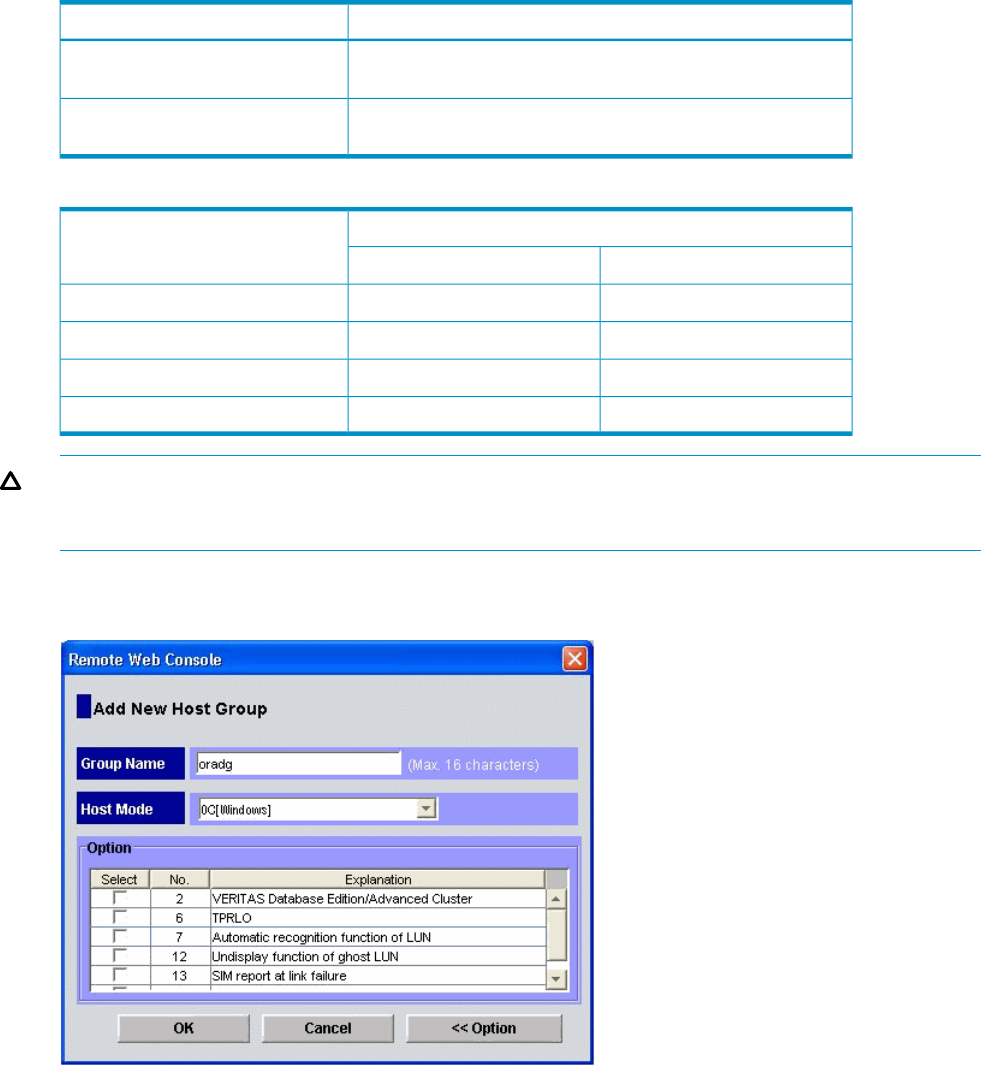HP StorageWorks XP Disk Array Configuration Guide (T5278-96047, May 2011)
Table Of Contents
- XP Disk Array Configuration Guide
- Contents
- 1 Overview
- 2 HP-UX
- Installation roadmap
- Installing and configuring the disk array
- Installing and configuring the host
- Connecting the disk array
- Configuring disk array devices
- Verifying the device files and drivers
- Creating the device files
- Creating the physical volumes
- Creating new volume groups
- Creating logical volumes
- Creating the file systems
- Setting the I/O timeout parameter
- Creating the mount directories
- Mounting and verifying the file systems
- Setting and verifying the auto-mount parameters
- 3 Windows
- 4 Novell NetWare
- 5 NonStop
- 6 OpenVMS
- 7 VMware
- 8 Linux
- 9 Solaris
- Installation roadmap
- Installing and configuring the disk array
- Installing and configuring the host
- Connecting the disk array
- Configuring disk array devices
- Configuring for use with Veritas Volume Manager 4.x and later
- 10 IBM AIX
- 11 Citrix XenServer Enterprise
- 12 Troubleshooting
- 13 Support and other resources
- A Path worksheet
- B Path worksheet (NonStop)
- C Disk array supported emulations
- D Using Veritas Cluster Server to prevent data corruption
- E Reference information for the HP System Administration Manager (SAM)
- F HP Clustered Gateway deployments
- Glossary
- Index

The available host mode settings are as follows:
Table 6 Host mode settings (Windows)
DescriptionHost mode
HP recommended. For use with LUSE volumes when online LUN
expansion is required or might be required in the future.
2C (available on some array
models)
HP recommended. Use if future online LUN expansion is not
required or planned.
0C
Table 7 Volume names for host mode setting (Windows)
Volume name as seen on hostVolume on XP array (examples)
host mode = 2Chost mode = 0C
OPEN-EOPEN-EOPEN-E
OPEN-9OPEN-9OPEN-9
OPEN-9OPEN-9*2OPEN-9*2
OPEN-9-CVSOPEN-9*3-CVSOPEN-9*3-CVS
CAUTION: The correct host mode must be set for all new installations (newly connected ports)
to Windows hosts. Do not select a mode other than 2C or 0C. Changing a host mode after the
host is connected is disruptive and requires a server reboot.
When a new host group is added, additional host group modes (options) can be configured. The
storage administrator must verify if an additional host group mode is required for the host group.
The following host group modes (options) are available for Windows:
Installing and configuring the disk array 33










